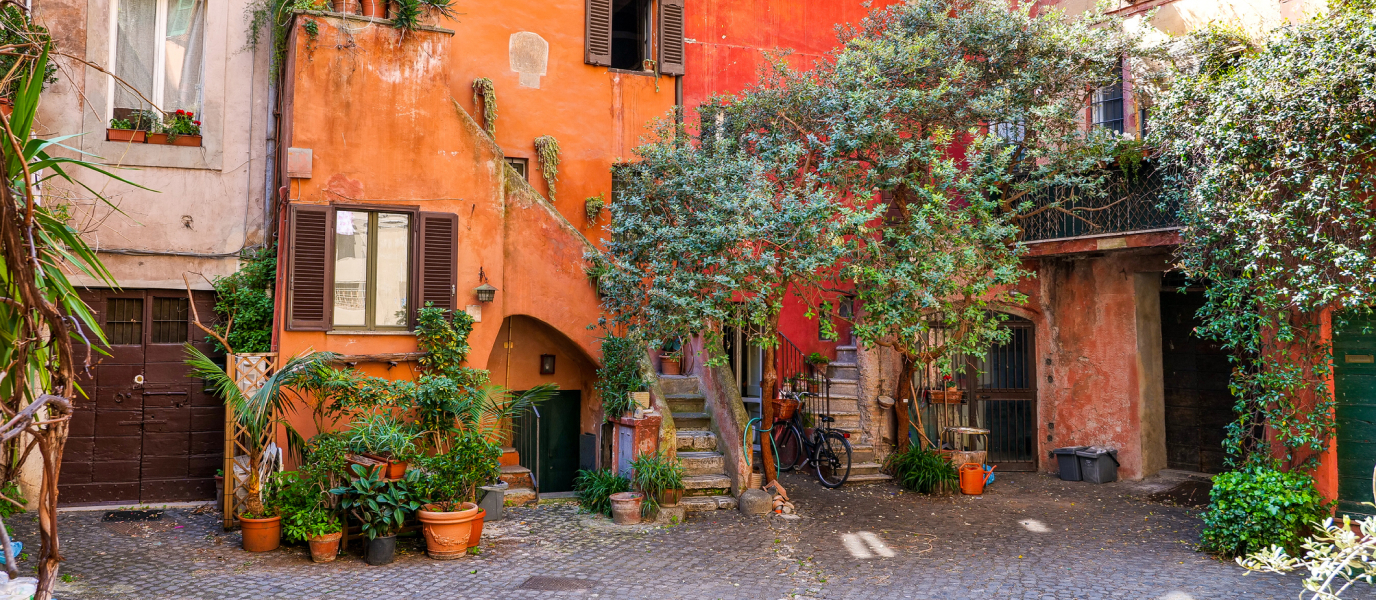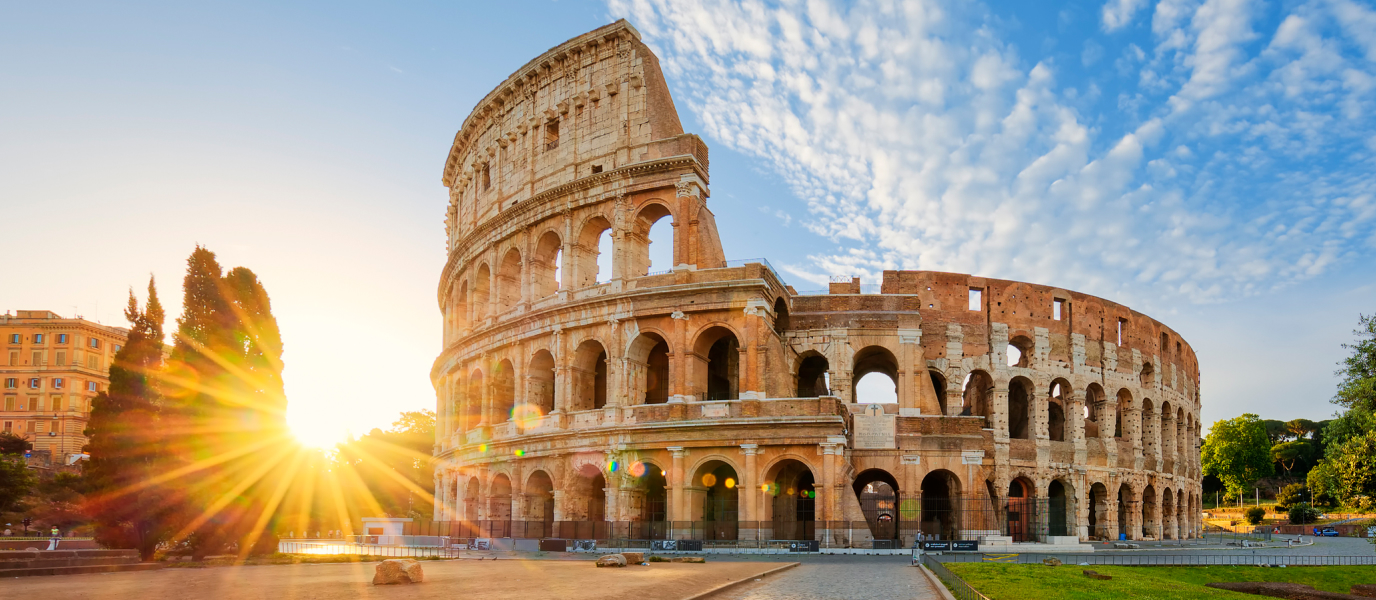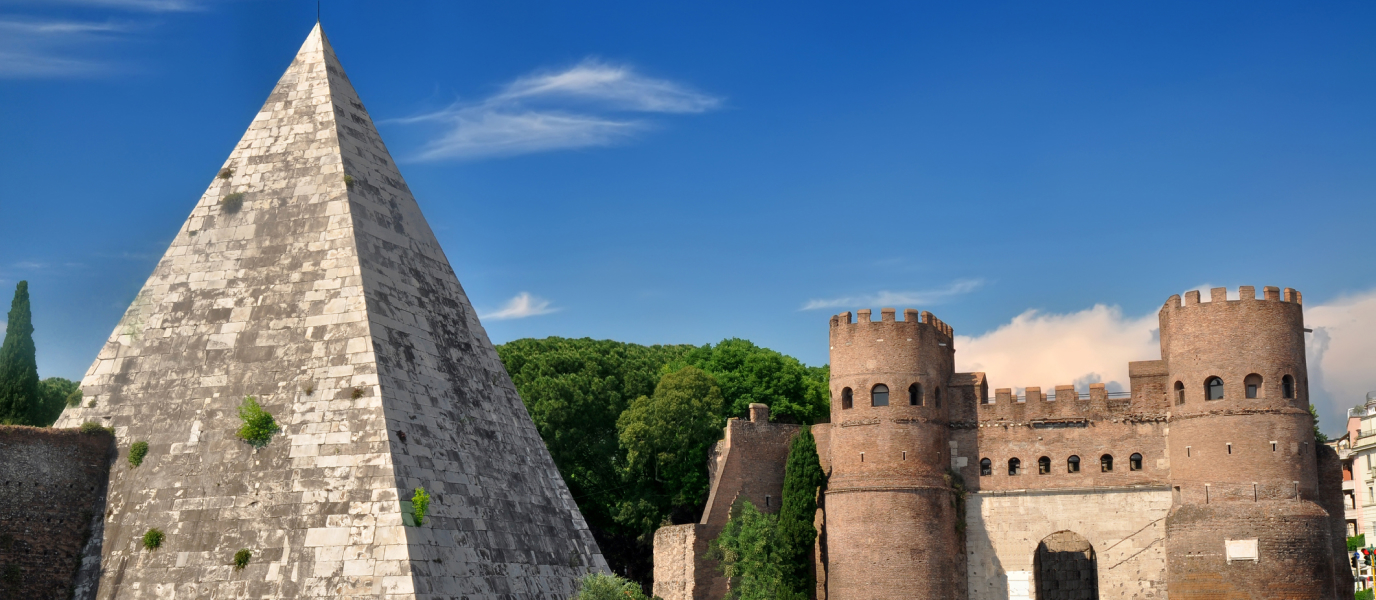Campo de’ Fiori or the ‘field of flowers’ is a lively piazza. In the morning, a bustling flower and food market brings in locals and tourists alike, and by night the terrace bars are packed out as people prepare to hit the town.
The irregular colourful facades of the buildings around the piazza conjure up images of the working-class Romans of days gone by. All that’s left of many of the old Medieval guilds and taverns that once lined these streets are their coats of arms. As you stroll along the cobbles, remember that this was where the most powerful Roman families established their homes. There used to be a horse market here, and it was also the site of public executions by order of the Inquisition.
Campo de’ Fiori is much more than just another piazza. In fact, it has a rich history of events ranging from celebrations to all-out blood baths. Read on to discover more about the ‘field of flowers’.
From wild meadow to heart of the city
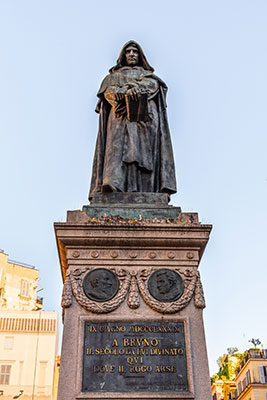
The majestic marble building comprising the Theatre of Pompey and the annex Temple of Venus stood in this piazza until the 5th century. Many parts of Rome were abandoned during the Middle Ages, and temples, theatres and stadiums fell into ruin. Campo de’ Fiori suffered the same fate and spent several centuries as a wild flower meadow.
The piazza lies close to the Tiber and experienced frequent flooding. Nothing was built there until Pope Callistus III decided to pave the entire area in 1456 as part of his renovation plan for Rione Parione, Rome’s sixth district. The upper classes and important religious figures subsequently flocked there. The first building to go up was the church of Santa Brigida a Campo de’ Fiori, followed by the Palazzo Orsini, Palazzo Farnese and Palazzo della Cancelleria. The wealthiest families in Rome established their luxury homes here and contributed to local economic growth.
The piazza soon became the heart of the city and the venue for celebrations, tournaments, and biweekly horse markets. Innkeepers and artisans set up shop, lured by the prosperity in this part of the capital. The surrounding streets still bear the names of the professional guilds that once operated here. One of the most popular taverns was Hostaria della Vacca. It was run by Vanozza Catanei, the mistress of Pope Alexander VI. The children he sired with Catanei (the only ones he recognised) marked the start of the House of Borgia.
It was around that time that the Inquisition started persecuting non-Catholics, and Campo de’ Fiori was the venue for several public executions. The Fontana della Terrina, which once provided fresh water to the neighbourhood from the centre of the piazza, was replaced by a somewhat severe statue of Giordano Bruno, a philosopher and mathematician who was burned at the stake in 1600 for heresy. The original fountain was moved to Piazza della Chiesa Nuova and a replica was constructed at the western end of Campo de’ Fiori.
Campo de’ Fiori market
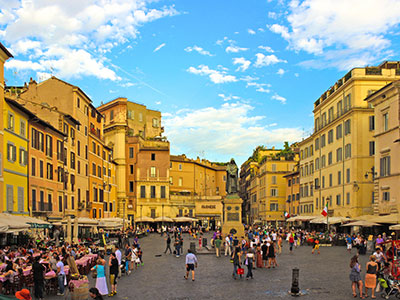
The piazza’s daily market selling meat, fish, fruit, vegetables and flowers is a real treat. It moved here from Piazza Navona in 1869 and has been held every morning (except Sundays) since then. In late afternoon, after the stalls have been packed away, the terrace bars in the piazza become a popular spot for an aperitif.
Around the piazza
The narrow streets around Campo de’ Fiori have numerous churches, palaces and other interesting buildings:
- Palazzo Orsini: Also known as Palazzo Pio, this palace was built atop the ruins of the Temple of Venus and was the residence of the wealthy Orsini clan, one of the oldest and most powerful Italian royal families.
- Palazzo della Cancelleria: This palace is one of Rome’s most sophisticated buildings. It was designed as a residence for cardinals and since the 16th century has been owned by the Roman Curia. Entrance is free, so take advantage of the opportunity to visit and admire the pretty Renaissance patio.
- Palazzo Farnese: The palace and the piazza of the same name were designed by some of the best architects of the era, among them Michelangelo. It now houses the French Embassy. Guided tours are available.
- Palazzo Spada: Famous for its art collection in the Spada Gallery and for the skilful optical illusions – highly impressive at the time – created by the architect Borromini with the help of a mathematician. The arched patio appears to have a depth of 37 m when it fact it’s only 8 m, and the life size sculpture at the back is in fact only 60 cm tall.
- Via Giulia: The first straight road in Rome. The traditional layout of narrow Medieval streets was shunned in the 16th century in favour of large straight roads that made traffic flow better. This particular road became lined with Renaissance palaces and is still one of the city’s main thoroughfares.
- Sant’Andrea della Valle: A pretty Baroque church famous for its dome, the height of which makes it the second tallest church in Rome after St Peter’s Basilica (designed by the same architect).

























































